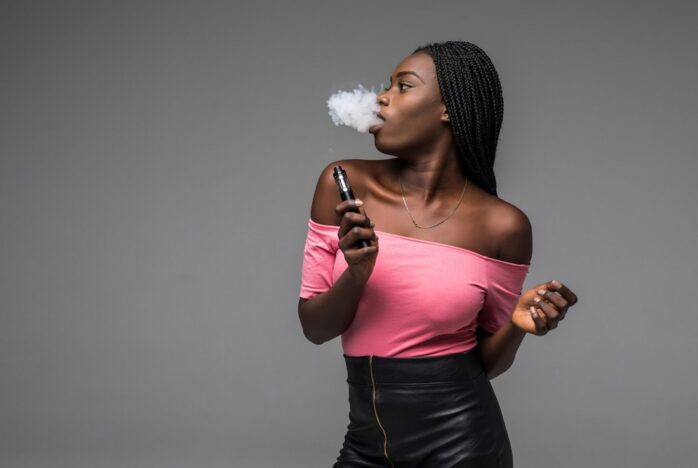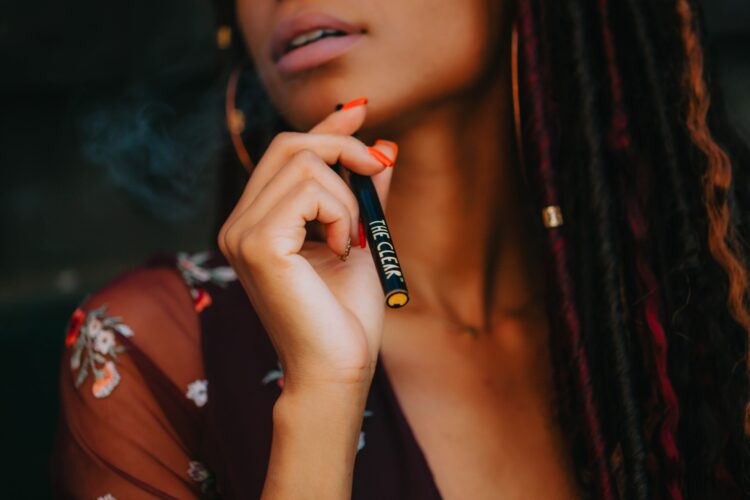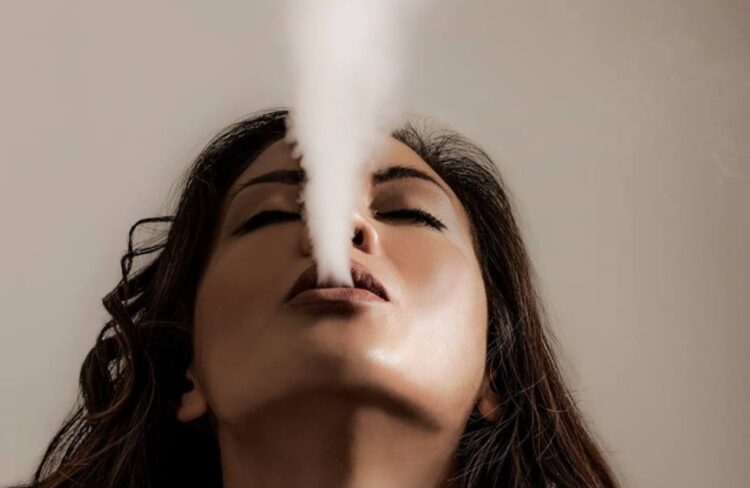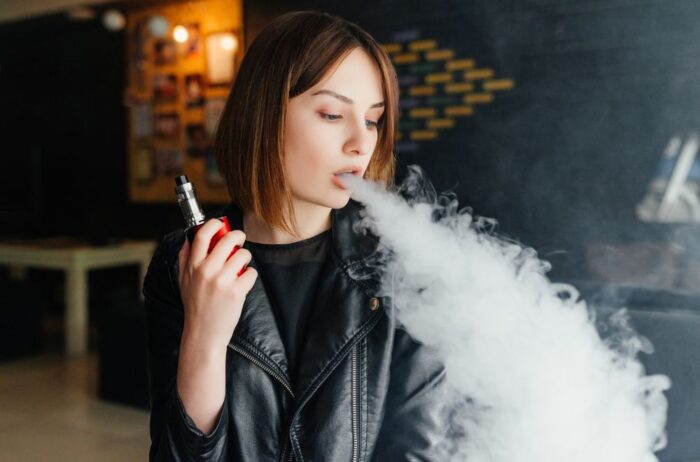
The world of social media is constantly evolving, and vaping has emerged as a dominant trend within this digital revolution. Marking its economic significance, the global e-cigarette market, valued at USD 18.32 billion in 2022, is forecasted to expand to an impressive USD 46.98 billion by 2030, growing at a CAGR of 12.49%. [1]
In this article, we’ll dissect the factors driving vaping’s popularity among influencers, the legal framework governing its promotion, and the platforms where this trend is most vibrantly unfolding.

Reasons Why Vaping Is Popular Today
The vaping industry has witnessed a remarkable transformation, evolving from a niche market to a major global player in the tobacco sector. This shift is characterized by rapid growth, technological innovation, and a changing perception of vaping’s role in society. Below, we outline the key factors contributing to this dynamic expansion:
Safety Perception
One of the driving forces behind this surge is the perception of e-cigarettes as a safer alternative to traditional smoking. People believe that vaping eliminates the harmful effects of tobacco combustion, such as tar and numerous carcinogens found in cigarettes, making it a potentially less toxic option for nicotine consumption.
Customization and Innovation
Manufacturers offer a wide range of customization options, allowing users to adjust temperature and nicotine levels to their preferences. Additionally, technological advancements like pod systems and squonk mods have significantly enhanced the experience, leading to increased adoption.
Pandemic Influence
The COVID-19 pandemic brought about unique marketing strategies. As physical stores faced challenges, online sales of e-cigarettes surged. Companies adapted by offering incentives such as hand sanitizers and face masks with purchases, tapping into the heightened health consciousness of consumers.
Legal Landscape
The legal environment has also played a crucial role. In countries like the UK, where e-cigarettes are legal, there has been a noticeable market expansion. The presence of vape shops, where customers can sample products before buying, has further stimulated market growth.

Does The Law Allow Companies to Advertise About Vapes?
The legal landscape surrounding the advertisement of vaping products is intricate and heavily regulated. The Food and Drug Administration (FDA) plays a pivotal role in setting these regulations, ensuring that the promotion of tobacco products, including e-cigarettes, adheres to strict guidelines.
| Regulation Category | Details |
| Health Warning Statements | As of August 10, 2018, all packages and advertisements for “covered” tobacco products, including e-cigarettes, must display required health warning statements. This mandate is part of the FDA’s efforts to ensure consumers are aware of the risks associated with it. |
| Brand Name Usage Limitations | The marketing, licensing, distribution, or sale of items or services that bear the brand name, logo, symbol, or other product identification of cigarettes or vapes is restricted. This rule is designed to prevent the indirect promotion of tobacco products through non-tobacco merchandise. |
| Free Sample Restrictions | The distribution of free samples is generally prohibited, with few exceptions. This measure is in place to prevent easy accessibility to younger demographics. |
| Ad Format and Display Requirements | Advertisements for vapes must adhere to specific format and display requirements. These include the placement and size of health warning statements, font size, and contrast with other material in the ad. |
The Emergence of Vaping Influencers
In the face of stringent advertising regulations for e-cigarettes, companies have pivoted to a more subtle yet effective strategy: partnering with social media influencers. Here’s a deeper look into this trend:

Influencer Partnerships as a Marketing Strategy
Influencers, often admired for their lifestyle and choices, seamlessly incorporate vaping into their daily routines, live streams, and posts, subtly influencing their followers. Moreover, the variety of flavors and styles offered by companies like Vape Juice provides ample content for influencers to explore, review, and share.
Organic Promotion Through Personal Use
Many of these online personalities are actual users of vape products. Their casual use during broadcasts or in posts, not necessarily paid endorsements, sets a trend. This authentic usage often prompts followers to mirror their habits.
Influence on Youth
Many influencers do not implement age restrictions on their social media content, resulting in their vaping-related posts being accessible to younger audiences. This lack of filtering means that impressionable teens and young adults are frequently exposed to vaping content, potentially influencing their perceptions and behaviors toward vaping as a lifestyle choice.
Regulatory Challenges
This form of marketing presents a challenge for regulators. While direct advertising of vaping products is subject to strict rules, influencer marketing operates in a gray area, making it harder for regulatory bodies to monitor and control.
5 Platforms That Influencers Mainly Use to Promote Vape
Let’s zoom in on the digital arenas where vaping really makes waves. Today’s influencers aren’t just sticking to one platform; they’re spreading their reach across various online spaces, each bringing something unique to the table. Here’s a snapshot of the top five that are used to ignite conversations about vaping:

1. Instagram
Instagram reigns supreme for its visual appeal, making it a go-to for influencers showcasing vaping products. Its array of features, from Stories to Reels, offers creative ways to display the sleek designs and promote new products.
2. YouTube
As the world’s largest video-sharing platform, YouTube is pivotal for in-depth videos. Creators use this platform for longer-form content, such as product reviews, tutorials, and vlogs that incorporate vaping.
3. TikTok
With its rapid growth in popularity, especially among younger audiences, TikTok has become a key platform for vaping promotion. Its short-form video format is ideal for creating quick, catchy content that can go viral, making it an excellent tool for reaching a larger audience.
4. Facebook
Facebook’s broad user base and community-building features make it a valuable platform for fostering groups and pages dedicated to vaping, allowing for more sustained and in-depth engagement.
5. Blogs and Forums
For a more thorough exploration of vaping, creators turn to blogs and forums. These platforms are ideal for detailed articles and discussions, offering a space for more nuanced conversations.

Conclusion
And there you have it — a brief yet revealing look at how vaping has become a prominent trend on social media, championed by influencers. This development not only speaks to the persuasive power of digital platforms but also to the changing landscape of lifestyle choices in the Internet age.











